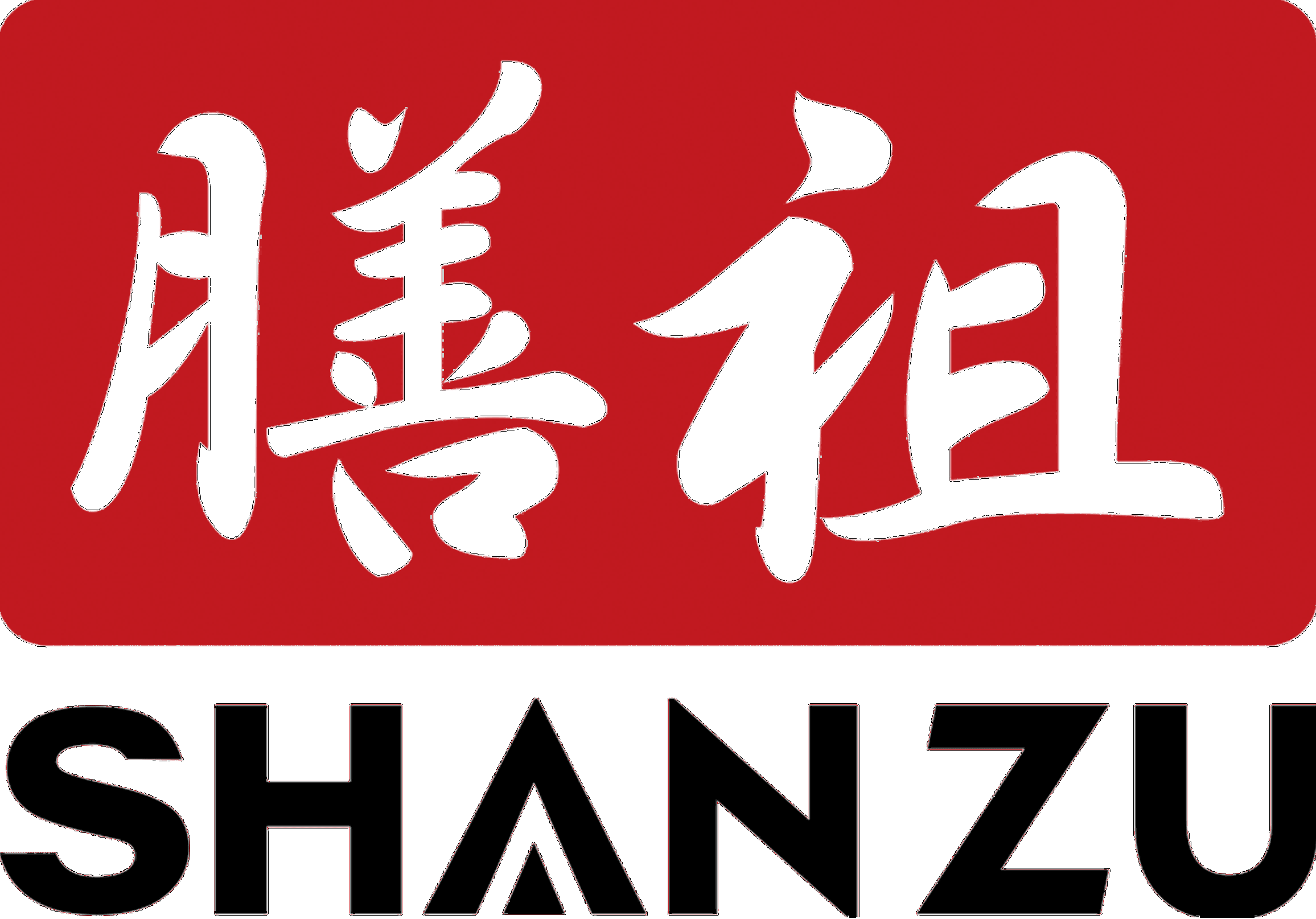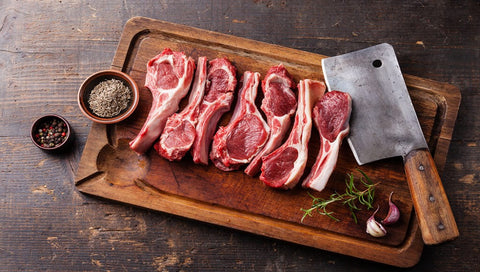What’s the Chinese Cleaver?
The main cutting techniques used in Chinese cuisine
 In Chinese cuisine, which is characterized by "stir-frying", we need the square blade knife to process the ingredients into slices, cubes, or shreds of uniform shape and size, which not only makes the ingredients to be heated more evenly but also one of the keys to a good stir-fry. Slicing occupies an exceedingly important place in Chinese cooking, especially for stir-fried foods. Ingredients cut into small pieces can be easily stirred and urned, cooked faster with less heating material, and conveniently handled with chopsticks. What’s more, cutting improves aroma and flavor by allowing spices to act on considerably more food surfaces. Before cutting a particular ingredient, consider carefully: the type and texture of the ingredient, how it will be cooked, and what it will be combined with. For frying, it is usually cut into larger pieces, and for steaming and stir-frying into smaller ones. For stir-fried dishes, the prominent vegetable decides the cutting technique. Diced meat goes with peas, strips of meat with bamboo shoots, and small shreds of meat with bean sprouts. Sometimes it's the other way around: for example when you cut the vegetables into narrow strips to go with the narrow strips of meat. Whether cut into slices, cubes, or strips, the ingredients of the individual dishes should be cut in the same way. In this way, they cook more evenly and the finished dishes will look more appealing, neat, and harmonious. It also makes it easier to eat with chopsticks: Uniform-cut pieces are easier to grab than a strip of this and a chunk of that. A Chinese cleaver is a multi-task knife, its features make it well-suited for the cutting techniques in Chinese cuisine. Whether you’re a kitchen enthusiast or a professional chef, your kitchen culinary journey is incomplete without a cleaver. For an all-purpose slicer, there's nothing better than a Chinese cleaver. The six main cutting techniques are slicing, dicing, chopping, stripping, crushing, and notching. With the Chinese cleaver, you get a wider blade that is very useful for transferring cut pieces off the chopping board. Mastering a Chinese cleaver requires a lot of skills and time to practice. But once you are familiar with it, the various applications of the knife will stand out. Below are some of the cutting techniques of a Chinese cleaver:
In Chinese cuisine, which is characterized by "stir-frying", we need the square blade knife to process the ingredients into slices, cubes, or shreds of uniform shape and size, which not only makes the ingredients to be heated more evenly but also one of the keys to a good stir-fry. Slicing occupies an exceedingly important place in Chinese cooking, especially for stir-fried foods. Ingredients cut into small pieces can be easily stirred and urned, cooked faster with less heating material, and conveniently handled with chopsticks. What’s more, cutting improves aroma and flavor by allowing spices to act on considerably more food surfaces. Before cutting a particular ingredient, consider carefully: the type and texture of the ingredient, how it will be cooked, and what it will be combined with. For frying, it is usually cut into larger pieces, and for steaming and stir-frying into smaller ones. For stir-fried dishes, the prominent vegetable decides the cutting technique. Diced meat goes with peas, strips of meat with bamboo shoots, and small shreds of meat with bean sprouts. Sometimes it's the other way around: for example when you cut the vegetables into narrow strips to go with the narrow strips of meat. Whether cut into slices, cubes, or strips, the ingredients of the individual dishes should be cut in the same way. In this way, they cook more evenly and the finished dishes will look more appealing, neat, and harmonious. It also makes it easier to eat with chopsticks: Uniform-cut pieces are easier to grab than a strip of this and a chunk of that. A Chinese cleaver is a multi-task knife, its features make it well-suited for the cutting techniques in Chinese cuisine. Whether you’re a kitchen enthusiast or a professional chef, your kitchen culinary journey is incomplete without a cleaver. For an all-purpose slicer, there's nothing better than a Chinese cleaver. The six main cutting techniques are slicing, dicing, chopping, stripping, crushing, and notching. With the Chinese cleaver, you get a wider blade that is very useful for transferring cut pieces off the chopping board. Mastering a Chinese cleaver requires a lot of skills and time to practice. But once you are familiar with it, the various applications of the knife will stand out. Below are some of the cutting techniques of a Chinese cleaver:
Slicing
 The Chinese cleaver features thin points which ideal for slicing meat and vegetables. This is done in three variations: straight, diagonal, and roll cut. Straight or vertical slicing is used for such delicate items as mushrooms, scallops, and liver. The diagonal or slant cut is used for coarse-grained meats and tough, fibrous vegetables. The rolling cut is a variation of the diagonal cut and is used on coarse, cylindrical vegetables such as radishes, carrots, and beets that are suitable for slow cooking. In this way, you will get an irregularly shaped slice with a lot of cutting surfaces, which contributes to faster cooking. You slice and roll until the vegetables are sliced.
The Chinese cleaver features thin points which ideal for slicing meat and vegetables. This is done in three variations: straight, diagonal, and roll cut. Straight or vertical slicing is used for such delicate items as mushrooms, scallops, and liver. The diagonal or slant cut is used for coarse-grained meats and tough, fibrous vegetables. The rolling cut is a variation of the diagonal cut and is used on coarse, cylindrical vegetables such as radishes, carrots, and beets that are suitable for slow cooking. In this way, you will get an irregularly shaped slice with a lot of cutting surfaces, which contributes to faster cooking. You slice and roll until the vegetables are sliced.Chopping
Chopping with a Chinese cleaver is very common and easy. It’s very efficient and easy to handle. This technique is mostly used for many recipes, like soups and stews. It consists of first chopping the ingredients quickly in one direction, then in another, and continuing to do so crosswise until the ingredients look as if they have been put through a miner. You can also replace it in fact by pressing the food once through the coarsest intent of the grinder. It saves a little time, but often squishes the mushy fibers, lets juice out, and makes the food tougher.Dicing
Due to the thin blades of the Chinese, it works efficiently for dicing meat and other vegetables. The easiest way is to cut the ingredients first into strips, then crosswise into cubes. When dicing irregularly shaped things, start at the narrowest end and work toward the thicker one.Stripping
It’s commonly used for cutting celery, carrots, onions, zucchini, bell peppers, and potatoes with a Chinese cleaver. This cut usually applies to vegetables, but it also works for meat or fish, especially in the case of stir-fries. In julienne cut, the ingredient is cut into long, uniform strips. Julienne cut is often used for salad ingredients and green vegetables.Crushing
Applied to garlic and ginger to release their fragrances during cooking, or to radishes and cucumbers in cold dishes to help the sauce penetrate the ingredients well. In doing so, it should be broken up but remain relatively intact and not fall apart. When crushing garlic, keep the broadside of the knife parallel to the chopping board so nothing splatters around. To start, slice ginger into a 1/2-inch-thick slice and hit it hard once with the flat blade of the knife. The fibers hold the slice together so that it can be taken out again - if necessary.Notching
Chinese cleaver knives allow you to process whole fish or large pieces of meat. The surfaces are scored (either parallel or crosswise) with light cuts to allow spices and hot oil to penetrate deeper. It shortens cooking time and improves the flavor.Appearance is not everything
Just because a Chinese cleaver looks like a cleaver doesn't mean you can use it to chop bones. Heavier cleavers are designed for that, but the main function of the lighter cleavers - often called Chinese chef's knives - is to cut meat and vegetables. Chopping bones with these lighter cleavers can ruin the blade. If you are not sure what kind of cleaver you have, contact the store where you purchased it. The most important thing is to find a well-made one. Your comfort level is also important. The cleaver should feel firm, but not too heavy. If your arms are strained when you hold the cleaver, try another. Preparing dinner shouldn't be taxing on your muscles!How to take care of a Chinese cleaver






Comments (0)
There are no comments for this article. Be the first to leave a message!